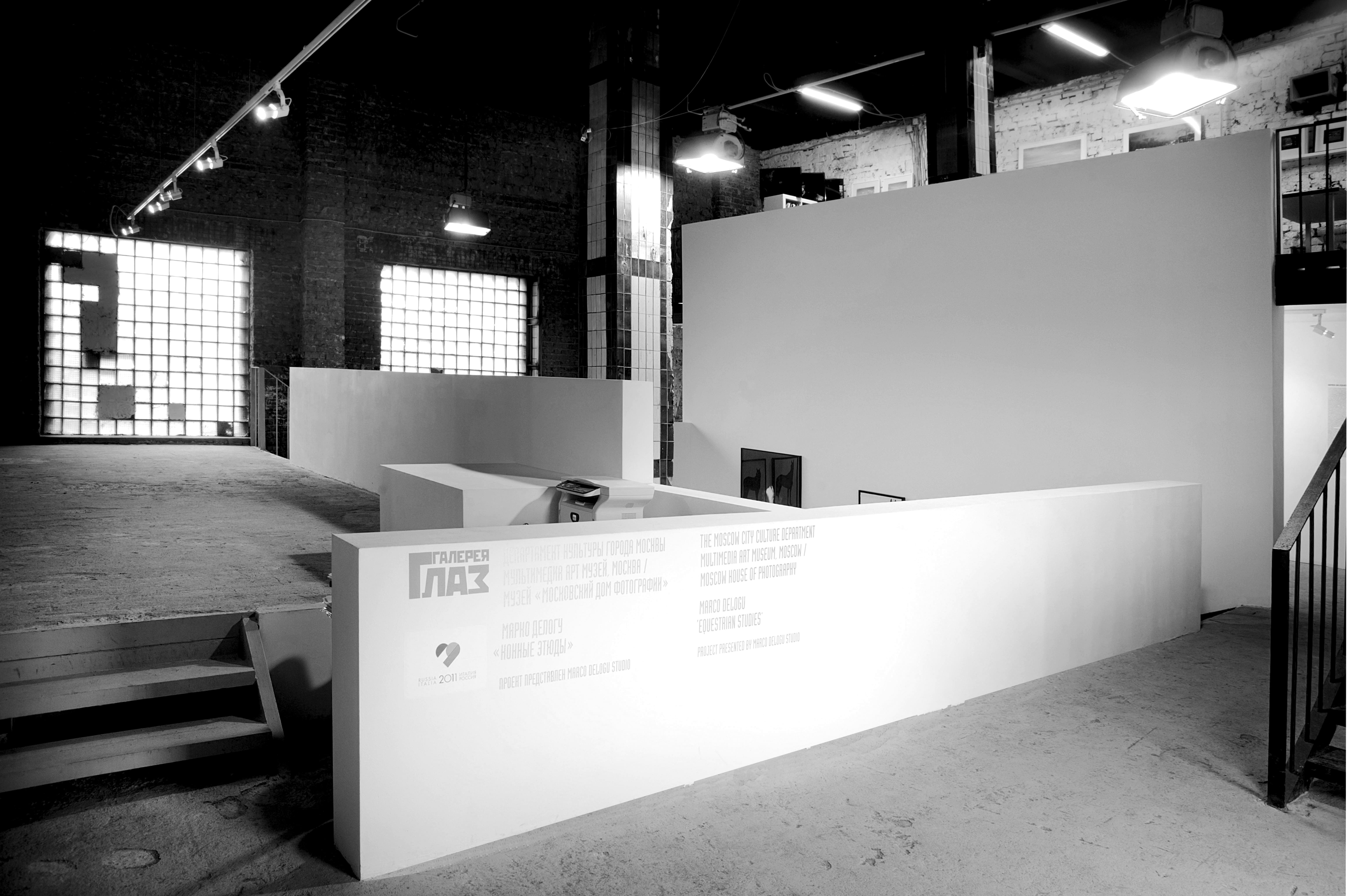Alexander Ostrogorsky
Art Dialogue
Alexander Ostrogorsky. New Russian Architecture
Alexander Ostrogorsky
06/09/18 17:39
5.2K
🔥
An exceptionally subjective selection by Alexander Ostrogorsky, showcasing eight young local architecture firms, each offering their own interpretation of post-post-socialist architecture. This article was originally published in Dialogue of Arts magazine.
Nowadays, Interiors of the Iskra cafe on Pokrovka street. 2015. Photo: Yuri Palmin
Just a decade ago, writing about modern Russian architecture for a journal called Dialogue of Arts would have seemed odd.
In the 1990s and 2000s, we witnessed architecture’s withdrawal from any dialogue with art and culture. In fact, this occurred during the Soviet era, when creative processes in the field were largely subordinated to industrial housing construction tasks, and only rare theater, museum, and government buildings were able to demand some degree of independence.
Architecture later became fully market-driven (with all the nuances that come with using the term "market" in our country, even exemplifying them). Daria Paramonova, head of the Strelka Architecture office, eloquently describes what followed in her work Mutant Mushrooms and Others: Architecture of the Luzhkov Era. She demonstrates how a weak professional culture’s interaction with new realities (both market and ideological) led to surprising architectural and construction phenomena. Moscow and other Russian cities were filled with shopping centers constructed with metal structures, interesting residential complexes, small kiosks, Hong Kong-like skyscrapers, and poorly replicated churches that were destroyed by the Bolsheviks but deemed valuable to the new government’s heart.
This collection of structures also included creations by people driven not only by business acumen but also by creative passion. Paramonova classifies many of these as "unique" — "In contrast to late Soviet modernism, these emerged as unique creations offering new guidelines based primarily on material values and mastered much more quickly than the other values of Western society," she writes. Paramonova provides an interesting list of formal techniques, and just from their brief descriptions, the reader will easily recall one or two examples (and perhaps shudder): "exaggerated architectural irony with bright colors and distorted shapes," "creating modern appearances with new cladding materials (e.g., blue mirror glass)," and "dynamic compositions manipulating abstract forms."
Most of these features suggest a reduced interest in official practices following the decades-long stagnation of the Soviet era. However, the results of these exercises often left a sense of emptiness — for what purpose?
"What was the author trying to say?" was hardly ever seen as a fitting question in the art community. Yet, when it becomes almost paranoically apparent that the author had nothing to say, it’s hard to avoid asking this question. This lengthy introduction, which I apologize for, is necessary. Few people follow architectural processes in Russia. It’s difficult to pursue something that constantly disappoints and undermines the taste (of the art enthusiast) and common sense (of every citizen and taxpayer). And, "If you don’t follow it, you can’t enjoy the changes." But the spirit blows where it will. It seems that it was time for local architects to return — to verify this, I selected eight offices. Among them, you won’t find a Russian Frank Gehry or a new Norman Foster, and it’s a good thing that these offices are generally limited to a few completed small projects.
But I have something to say. Architecture’s honor isn’t measured by scale — just look at the cyclopean Moscow housing complexes. Builders and engineers may take pride in complex structures and new materials. But if we’re looking for meaning in architecture, it’s not scale and complexity that matter — it’s thoughtfulness, the care the architect shows both in the general design and in every detail, the connection to architectural history, and the "genius of the space." Unlike the previous era, architecture now stands on its own.

Nowadays, Interiors of the Iskra cafe on Pokrovka street. 2015. Photo: Yuri Palmin
In 1966, American architect Robert Venturi, tired of the dominance of "international style," wrote the article Complexities and Contradictions in Architecture. Here, he protested the rigidity, abstraction, and universality of the architectural language created by Le Corbusier, Mies van der Rohe, and Bauhaus. Venturi believed that the modernists' obsession with the relationship between form and function led them to abandon symbolism in architecture, erasing culture-specific meanings. Architecture gradually transformed from art into the production of buildings.
Every work of art contains conflict, "complexities and contradictions." Simplification, just like meaningless decoration, deprives a building of its meaning; contradictions and complexities are returning. Today, those who often reference Venturi’s ideas aim to reintroduce meaning into their activities by using his lens. An architectural work doesn’t only serve utilitarian purposes, and if it raises important questions and offers intriguing answers, the author’s resolve is justified. In the 1990s and 2000s, the search for "national identity" in Russian and, especially, Moscow architecture led us to various experiments that flirted with neo-Russian style but were more about representing an elementary scenario themed around "Muscovite" rather than providing any real understanding of the city. Today, they have almost literally taken a different path — starting from the Kremlin towers, they moved underground, to the metro. The marble of the stations, liberated from ideologically-approved imperial forms, became the foundation for creating the image of a "distinctly Moscow" bar.
Citizenstudio

Citizenstudio. Reconstruction of the halva workshop in the Rot Front factory for the Eye photo gallery. 2013. Photo: Alexander Naroditsky
The architectural office "Gorozhane," whose name humorously contrasts the position of an architect who strongly organizes space for "ordinary people" with that of an expert, is notable. The office’s co-founders, Mikhail Beilin and Daniil Nikishin, have a photo of the same interior three times in Photoshop, creating the impression of a large (greater than two-person) office. For the architects, too, it looks like the townspeople exist, but they all seem the same, perhaps desiring something or refusing to accept the opposite, but they don’t protect their interests themselves — they (unconsciously) "delegate" to the architect or developer. An architect declaring themselves as the defender of ordinary people’s interests treads on thin ice, considering that numerous projects of the 20th century, from Soviet Constructivists to British Brutalists, aimed to improve the lives of thousands of people. On the other end of the spectrum is the "participatory design" movement, popular in our country in recent years, which involves the end user in the building creation process and, to many, feels like abandoning natural rights. Architecture envisions the world in its own way, proposing its own solutions.
It seems that "Citizens" have declared themselves as ordinary people with their education, tastes, interests, and opportunities, outshining everyone, but in fact, they are no more or less important than the city’s other residents.
Their task is to make proposals, not to impose them. Among the most admired architects of the office is Konstantin Melnikov, who seized opportunities to bring ideas to life but never turned them into a platform, a dogma, or a program. The now-defunct "Eye" gallery in the abandoned halva workshop of the Rot Front factory became an expression of the theme of modern cultural spaces that do not ignore the past but try to coexist with it. The art gallery does not elevate itself above halva; it carefully avoids the Soviet floors, tiles, and bricks. Just as books, paintings, and plates leave a rental apartment when the tenant moves out, anything new disappears easily when the space changes hands. The city’s architect should be aware of their temporality and contingency, both in the workshop and across the entire city, doing no more than what can be confirmed in terms of necessity and appropriateness. An architect is different from other townspeople in how they inhabit the space, but they hold no special privilege.
Fast)
Fast). Reconstruction of Palazzo Ca’Tron, Venice. 2017. Visualization
Any success abroad for a citizen is a source of pride, but it hardly seems worth fighting against the characteristic feature of our culture, which is seen as marginal, i.e., not provincial but distant from the center. Then another useful question might arise: What exactly did the heroes offer to the world, which turned out to be valuable outside of our environment? In other words, success can become a reason for thought. This winter, the Fas (t) office won an international competition for the reconstruction of Palazzo Ca’Tron in Venice, which belongs to one of the faculties of the Venice Architecture Institute, IUAV.
The project proposed by the office was titled "Delicate Interventions." It required not only suggesting new things but also eliminating unnecessary aspects arising from the monument’s operation. At the same time, it had to align with the university’s work, making it appealing to the broad and demanding public that regularly visits Venice during the Biennale. The architect faced a type of Scylla and Charybdis — to do something significant, remain unnoticed, but still be visible to a careful observer. Today, this is a popular trend in Europe that only raises the bar.
The architects showcased their subtlety and modernity with a refined order. Rejecting the tempting idea of building a toy palazzo, they simply showcased their "interventions" without attempting to hide them in elegant artistic materials.
Kleinewelt Architecture
Kleinewelt Architecten. Gai-Kodzor Winery, Anapa, Krasnodar region. 2017
Most of the situations described in architectural practice leave the impression that nothing can be said without dual or triple meanings and ironic disconnections between inside and outside. The works of Kleinewelt Architecten are of a different kind.
The office’s message about the value of "
newness" is a serious one, but not trivialized. They search for new ways of design and use for functional and practical areas, but without calling attention to them. They exhibit precision and architectural restraint. More generally, the ideas of this office can be framed as sincere modernism. Unlike many other architects who claimed success in the 20th century, they have not strayed from any conventions.
